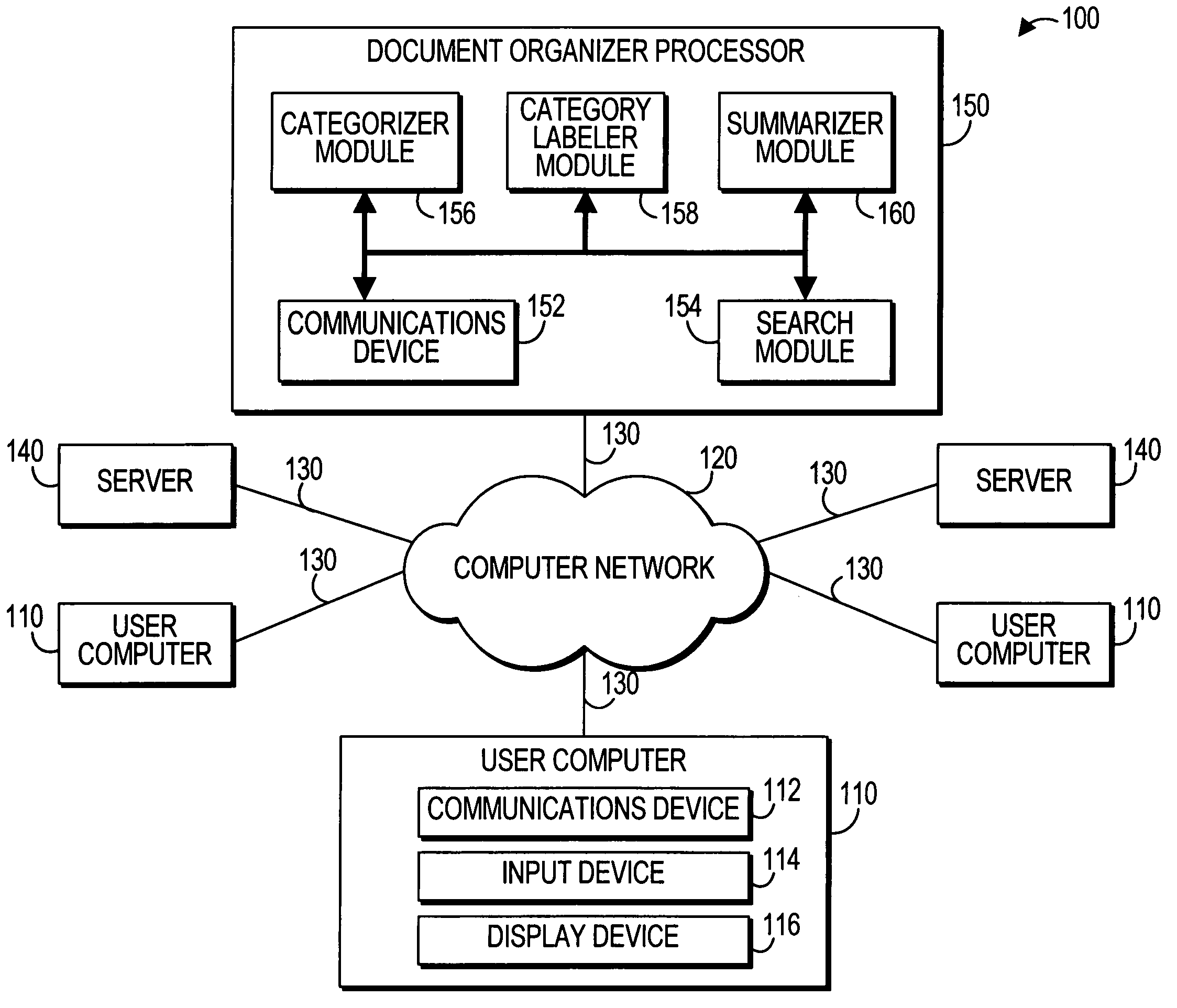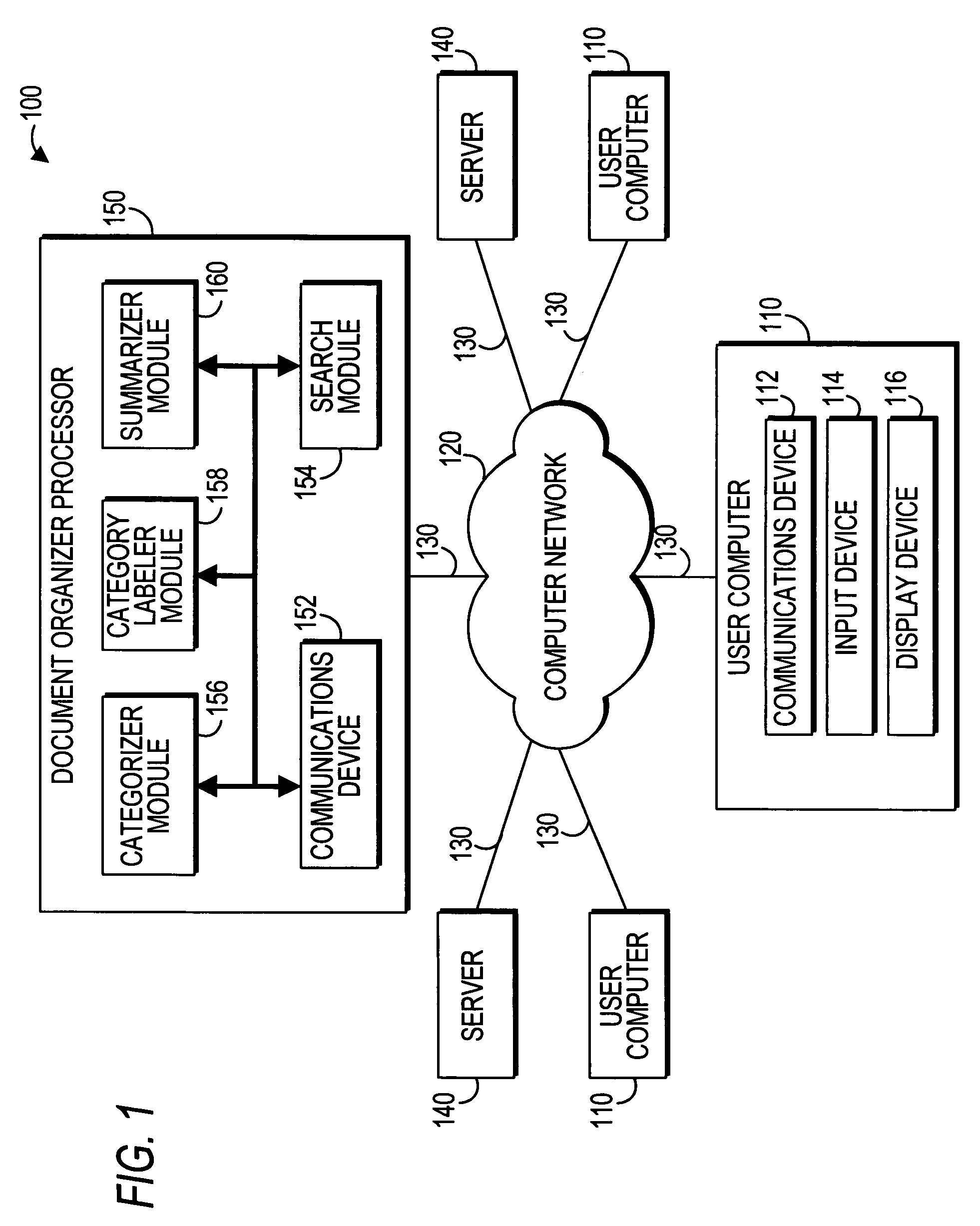Systems and methods for document searching and organizing
a document search and document technology, applied in the field of system and method for document search and organizing, can solve the problems of increasing keyword searches, and search results performed using search directories that often return too little useful information, so as to reduce the difficulty of finding relevant information by opening and reading multiple documents, the effect of reducing the difficulty of editorial staff's task of covering a large percentage of the intern
- Summary
- Abstract
- Description
- Claims
- Application Information
AI Technical Summary
Benefits of technology
Problems solved by technology
Method used
Image
Examples
Embodiment Construction
[0021]As explained in more detail below, the present invention relates to systems and methods for interactively searching, retrieving, categorizing, and summarizing documents. A document organizer processor may locate documents related to a user's search query, parse words in the documents into a word set, filter out unnecessary words, group the documents into categories, provide labels for the categories, construct summaries of the documents in each category, present the categories and summaries to the user.
[0022]The document organizer processor may utilize clustering methods in order to group and categorize retrieved documents. Generally, there are two types of document clustering: nonhierarchical and hierarchical. Nonhierarchical clustering methods may group (partition) documents in a predefined number of clusters. Nonhierarchical clustering typically involves heuristics to generate partitions in an iterative manner. The determination of the final clusters using nonhierarchical c...
PUM
 Login to View More
Login to View More Abstract
Description
Claims
Application Information
 Login to View More
Login to View More - R&D
- Intellectual Property
- Life Sciences
- Materials
- Tech Scout
- Unparalleled Data Quality
- Higher Quality Content
- 60% Fewer Hallucinations
Browse by: Latest US Patents, China's latest patents, Technical Efficacy Thesaurus, Application Domain, Technology Topic, Popular Technical Reports.
© 2025 PatSnap. All rights reserved.Legal|Privacy policy|Modern Slavery Act Transparency Statement|Sitemap|About US| Contact US: help@patsnap.com



